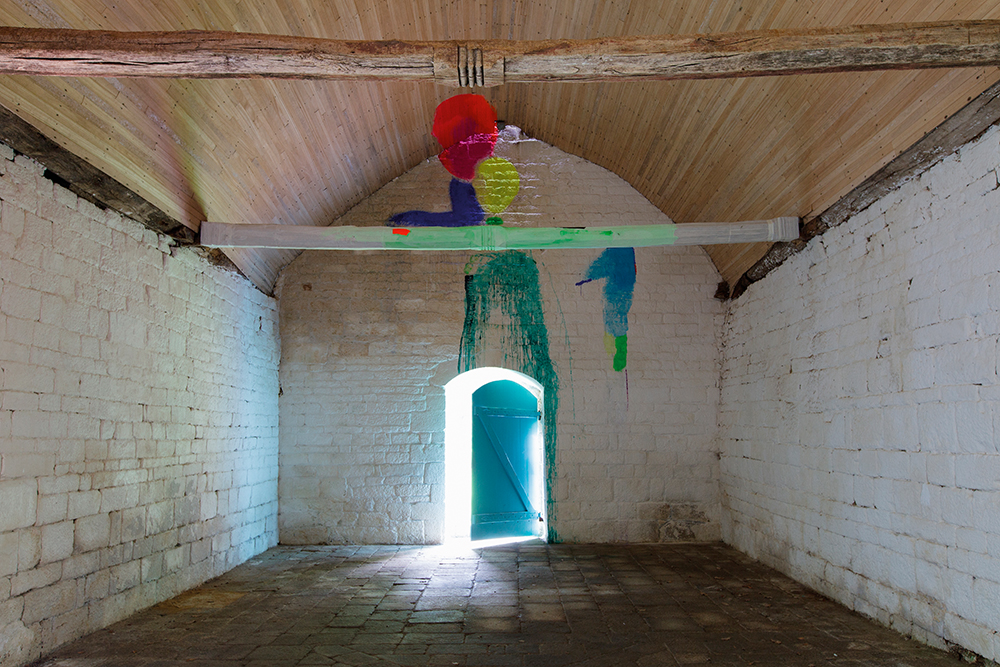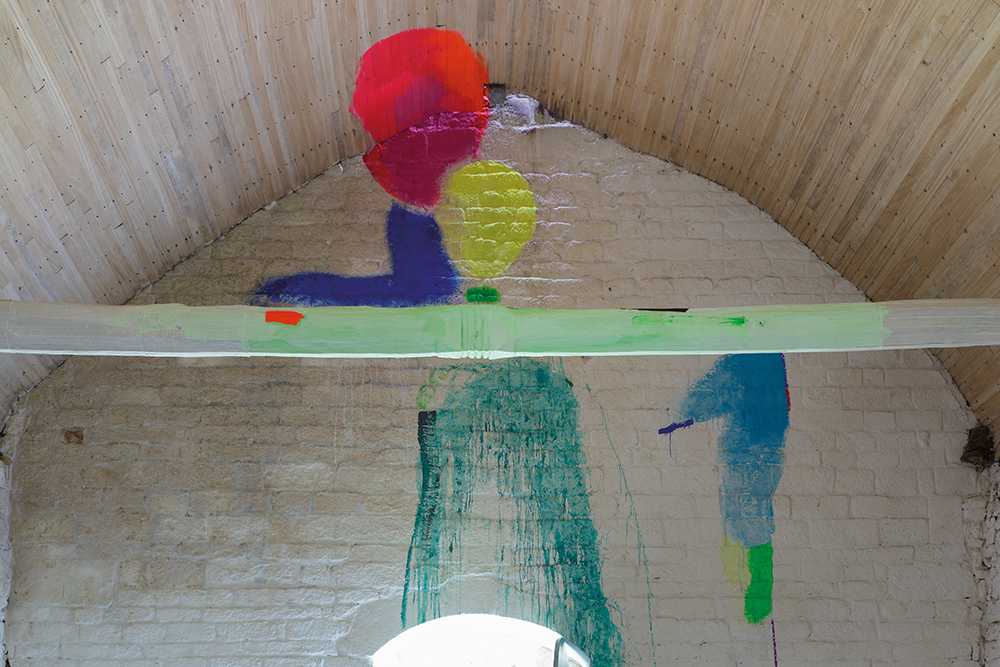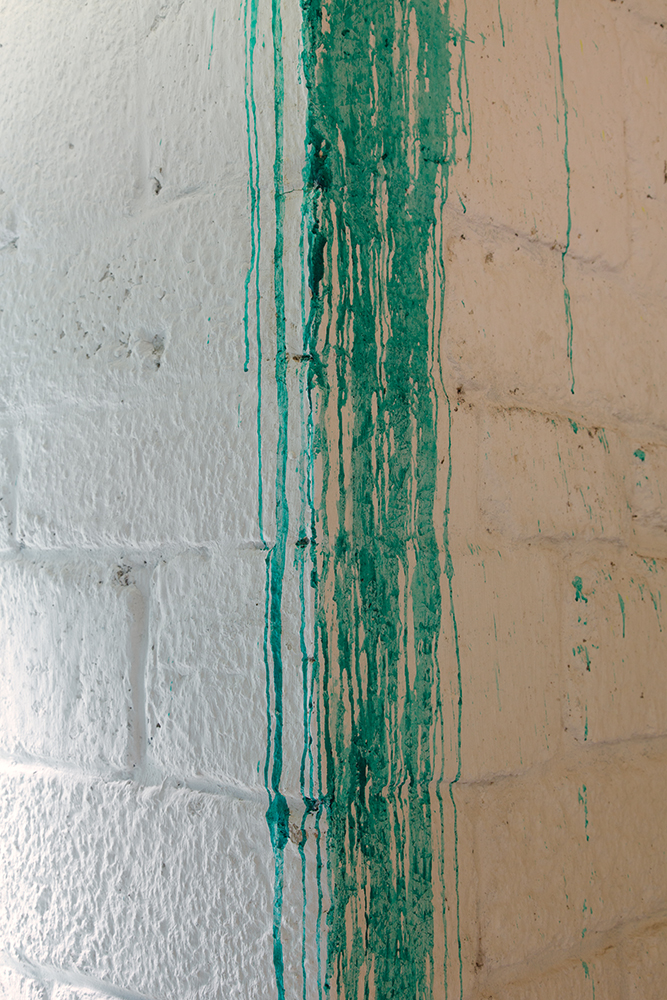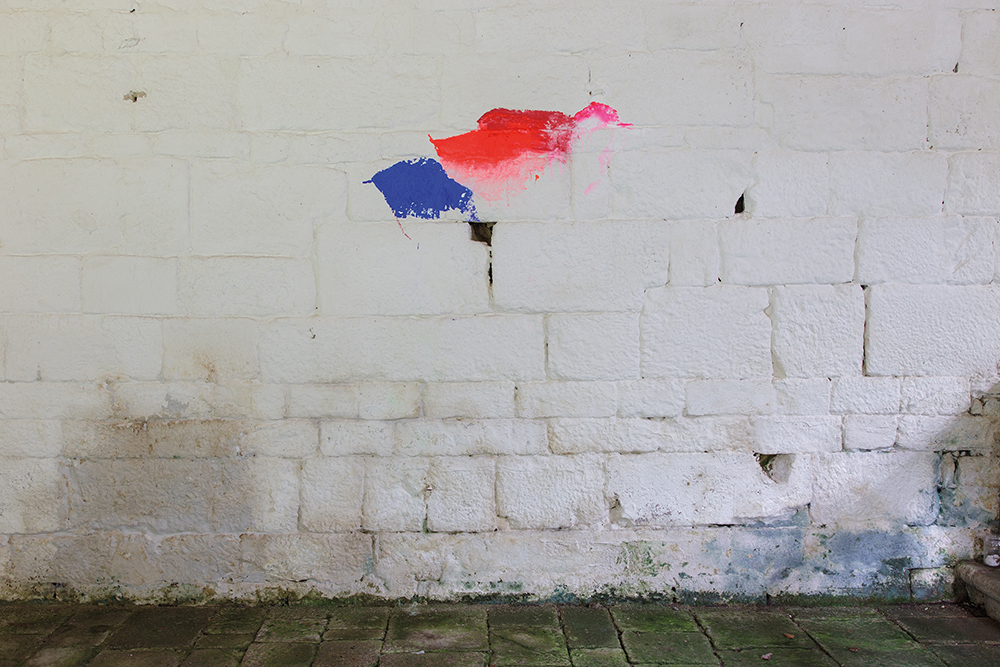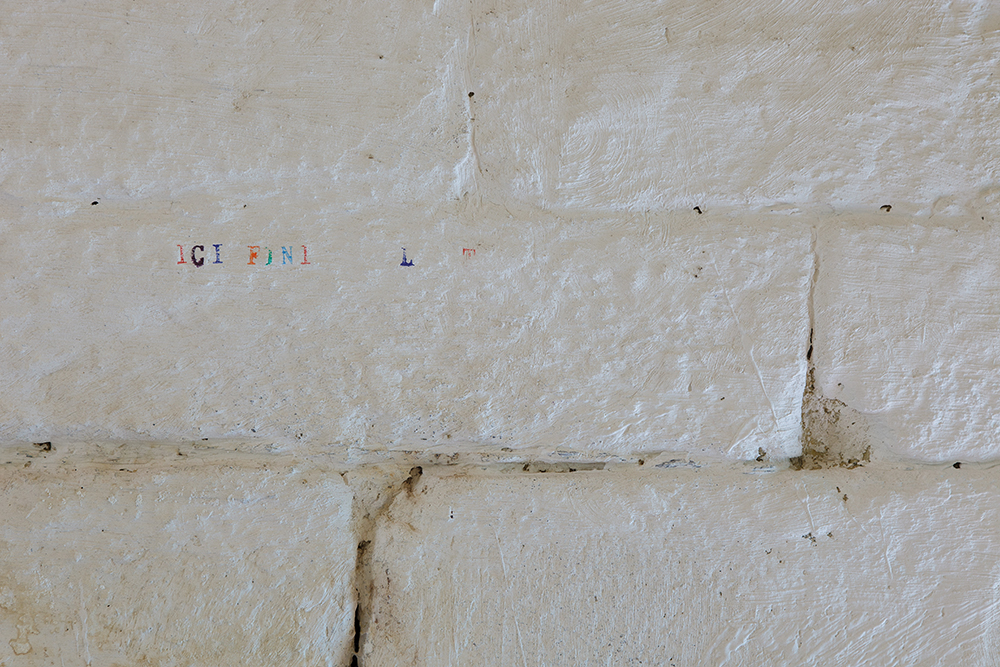« Chêne, Châtaigne » (Oak, Chestnut)
Temporary installation executed for the 21st edition of l'Art Dans Les Chapelles, Morbihan, Brittany | Notre-Dame du Cloître Chapel, Quistinic | july 6th to 16 september 16th 2012
invited by Emilie Ovaere-Corthay et Karim Ghaddab
lime, limewater, natural pigment, acrylic on the chapel's wall, ceiling and beam, various dimensions, 2012
I lived in the village of Quistinic for one month, where I went through the space of the chapel on a daily basis and met people who were attached to this place steeped in history. My drawings are a “recommunication” between the chapel, the lights that come within and the sacred place used as such by the Celts and by the Christians since 1638. Looking west, a sacred shape : the Madonna and Child, bringing together a Christian icon – the Rosary Chapel's from my notebook – and Celtic imagery which separated God's and humans' representations through abstraction. On the northern wall, natural shapes : a drawing of oak leaves, a sacred tree for the Celts, merges into a drawing of chestnut leaves, a tree imported by the Romans which gave its name to the village – Quistinic means chestnut grove in Breton. On the right of the southern entrance, on the wall above the stoup, a message : for the Celts, going to the end of the earth was a form of pilgrimage. Each visitor is encouraged to interpret the partial text to pursue the thought: “ici finit l. t.” (“here ends t. e.”)
